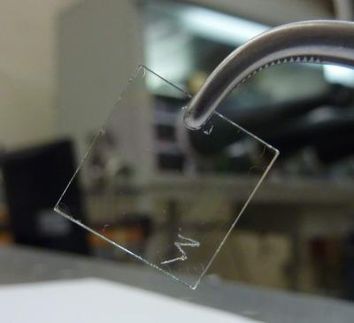Schott Hi-Tech Project at the Mainz Location: Luminous Plastics for Innovative Lighting
Advertisement
With organic LEDs for high-quality, innovative lighting the Schott technology group has launched one of its most important future-oriented projects. In a new hi-tech research laboratory at the Mainz location around 20 scientists will in future be conducting fundamental research into the manufacture of large-area components based on these luminous plastics - so-called "Organic Light Emitting Diodes" (OLEDs). "In OLEDs for lighting applications Schott is playing a pioneering role. With our potential in basics and technology we are in a position to drive forward the development of large-area components significantly," explained Dr. Udo Ungeheuer, a member of the Board of Management, on the occasion of the official inauguration of the clean room laboratory.
Indeed, on this project, in which partners from industry and science are also involved, Schott is contributing comprehensive know-how in the field of thin-glass substrates, lighting, large-area coating processes, encapsulation processes, analysis, and measuring technology. OLED activities, which are sponsored by the Rhineland- Palatinate Ministry of Economics through Investitions- und Strukturbank Rheinland- Pfalz (ISB) GmbH and are limited to a period of three years initially, are intended to create a basis for pilot production in the future.
OLEDs are especially fascinating due to such properties as light weight, high energy efficiency, wide beam angle, brilliant colors, and high luminance. So far the attraction of organic LEDs was centered on display applications. Meanwhile, however, the potential of this relatively young technology has also been recognized for the lighting sector: Schott is one of the first companies to launch activities in this market segment. The Mainz researchers are convinced there are promising fields of application for OLED light sources in the automotive sector, design, advertising, consumer products, laboratory equipment, and traffic engineering.
OLEDs are comprised of a substrate, a transparent electrode, thin organic layers only nanometers thick, and a counter electrode. The mode of operation is based on so- called injection electroluminescence, where application of a voltage to the electrodes causes the organic layers to emit light.
Most read news
Organizations
Other news from the department research and development
These products might interest you
 New
New
Köttermann VarioProtect by Köttermann
Sustainable All-in-One Solution: Safely store hazardous substances in just one cabinet.
Safe handling of different chemicals, combined with measurable resource savings.

tritec® Chromatographic refrigerators by tritec für Labortechnik und Umweltsimulation
Energy-efficient chromatography refrigerators for precise temperature control
Safe storage of your HPLC systems at -5 °C to 20 °C with modern touchscreen display

MARSXpress 2.0 by CEM
Intelligent Microwave Digestion System for Maximum Flexibility and Efficiency
From Single Sample to High Throughput - Optimal Results at the Push of a Button

PG 85 by Miele
Powerful, safe, flexible: Compact lab washers with intelligent wash system
Developed for the reprocessing of laboratory glassware for analytical experiments

ETN-12 EME by dichrom
Revolution in sample preparation: Spotlessly clean samples without LC for direct MS analysis via EME
World premiere EME enables parallel, fast, green sample extraction from complicated matrices
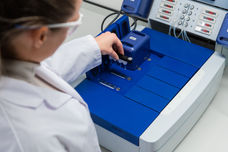
CrystalBreeder by Technobis
CrystalBreeder: the next generation multi-reactor crystallization platform
Enhance your early stage solid state screening. New: controlled evaporation & vapor diffusion modes

Crystal16 by Technobis
Crystal16 - the ultimate instrument for research and process development
Upgrade your crystallization screens with the next generation benchtop crystallization system
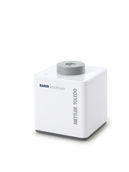
SmartCheck by Mettler-Toledo
Check Pipette Dosing Accuracy - Lightning Fast in Under a Minute
Detect dosing errors before it gets expensive
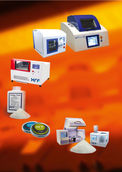
Catalogue: Automated Fusion Equipment by XRF Scientific
Automated Fusion Equipment
Sample Preparation at Highest Level

Laboratory lifting stages by JUCHHEIM Laborgeräte
Working more safely - lifting platforms for heavy loads in the test setup
Quick and vibration-free change of lifting height - for loads from 4 kg to 85 kg

Renting and Leasing Solutions for Laboratories by Bios Analytique
Specialists in the rental and leasing of scientific equipment for laboratories throughout Europe
Whether you have an unexpected requirement or limited budget, we have the perfect solution for you

ST1 by a1-envirosciences
Weighing hazardous substances with a maximum of safety
The safety weighing cabin for your personal protection at the workplace
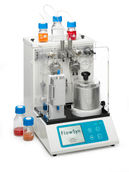
FlowSyn and FlowSyn Maxi by Uniqsis
Continuous Flow Chemistry Systems for reaction optimisation and scale up
Perform reactions up to 300°C and 100 bar from 0.1 - 100 ml /minute

KNAUER IJM NanoScaler by KNAUER
Efficient formulation of lipid nanoparticles for RNA-based therapies
Optimise drug encapsulation from 1 ml to hundreds of millilitres with minimal drug input

Get the chemical industry in your inbox
By submitting this form you agree that LUMITOS AG will send you the newsletter(s) selected above by email. Your data will not be passed on to third parties. Your data will be stored and processed in accordance with our data protection regulations. LUMITOS may contact you by email for the purpose of advertising or market and opinion surveys. You can revoke your consent at any time without giving reasons to LUMITOS AG, Ernst-Augustin-Str. 2, 12489 Berlin, Germany or by e-mail at revoke@lumitos.com with effect for the future. In addition, each email contains a link to unsubscribe from the corresponding newsletter.



